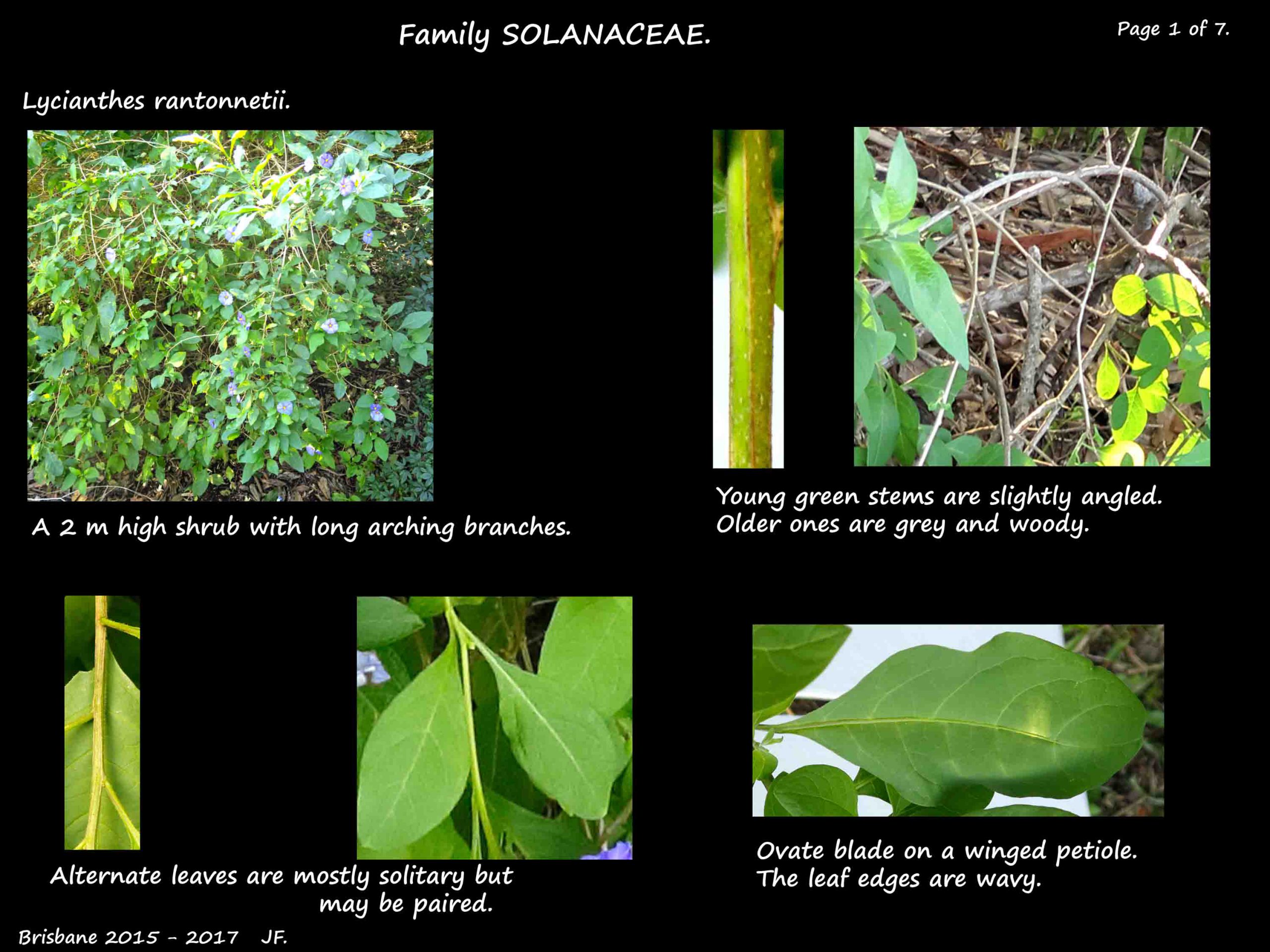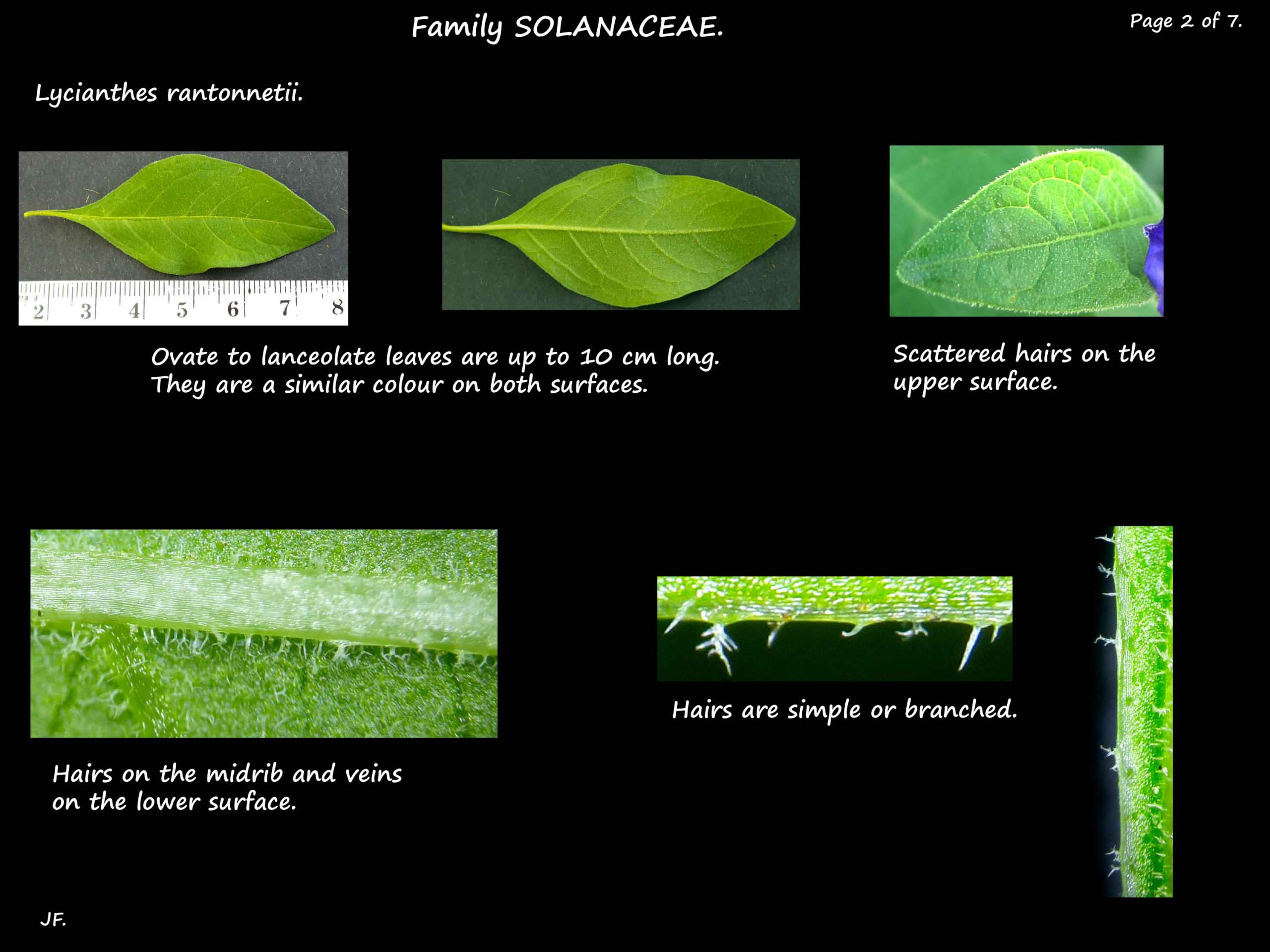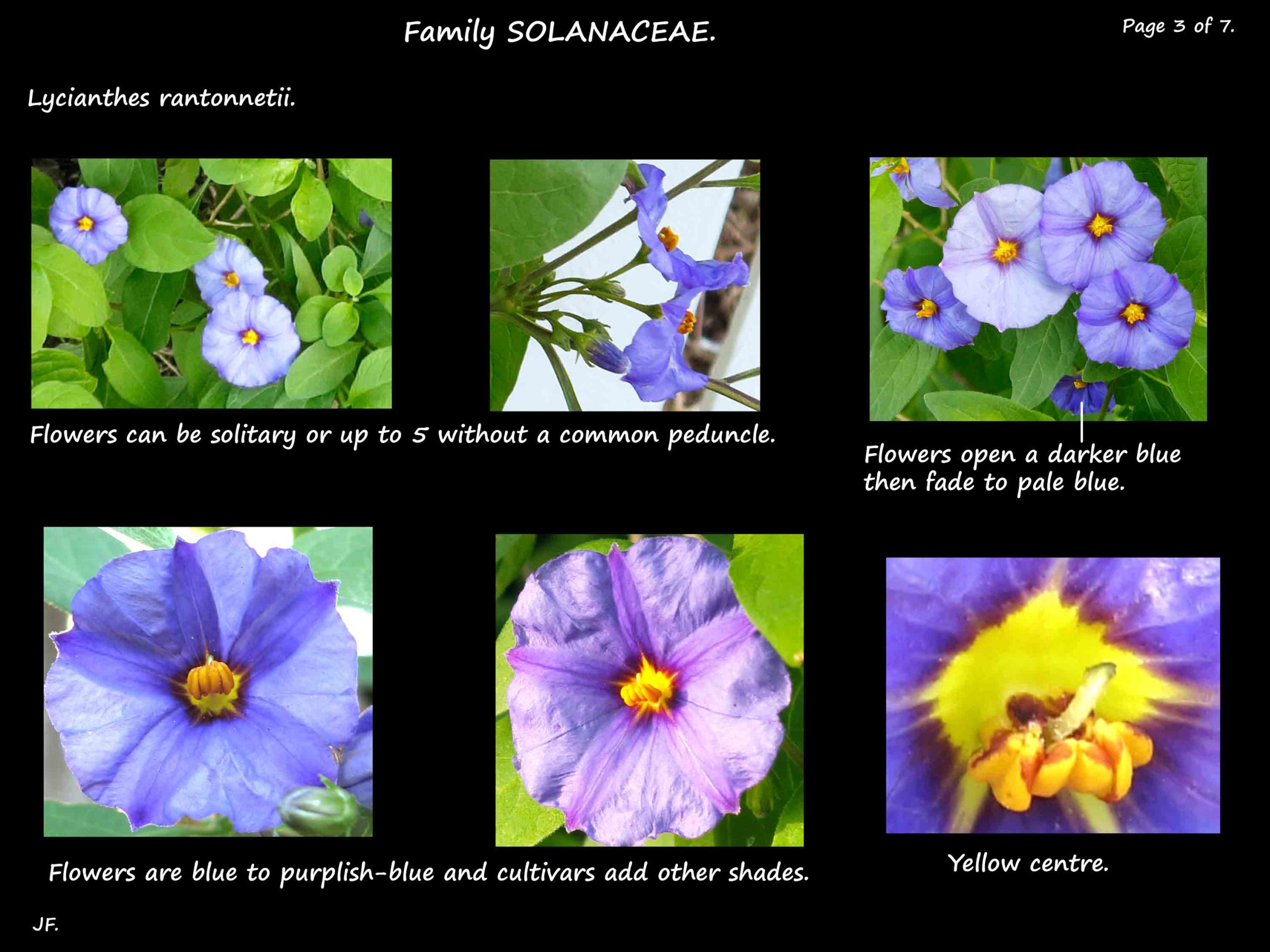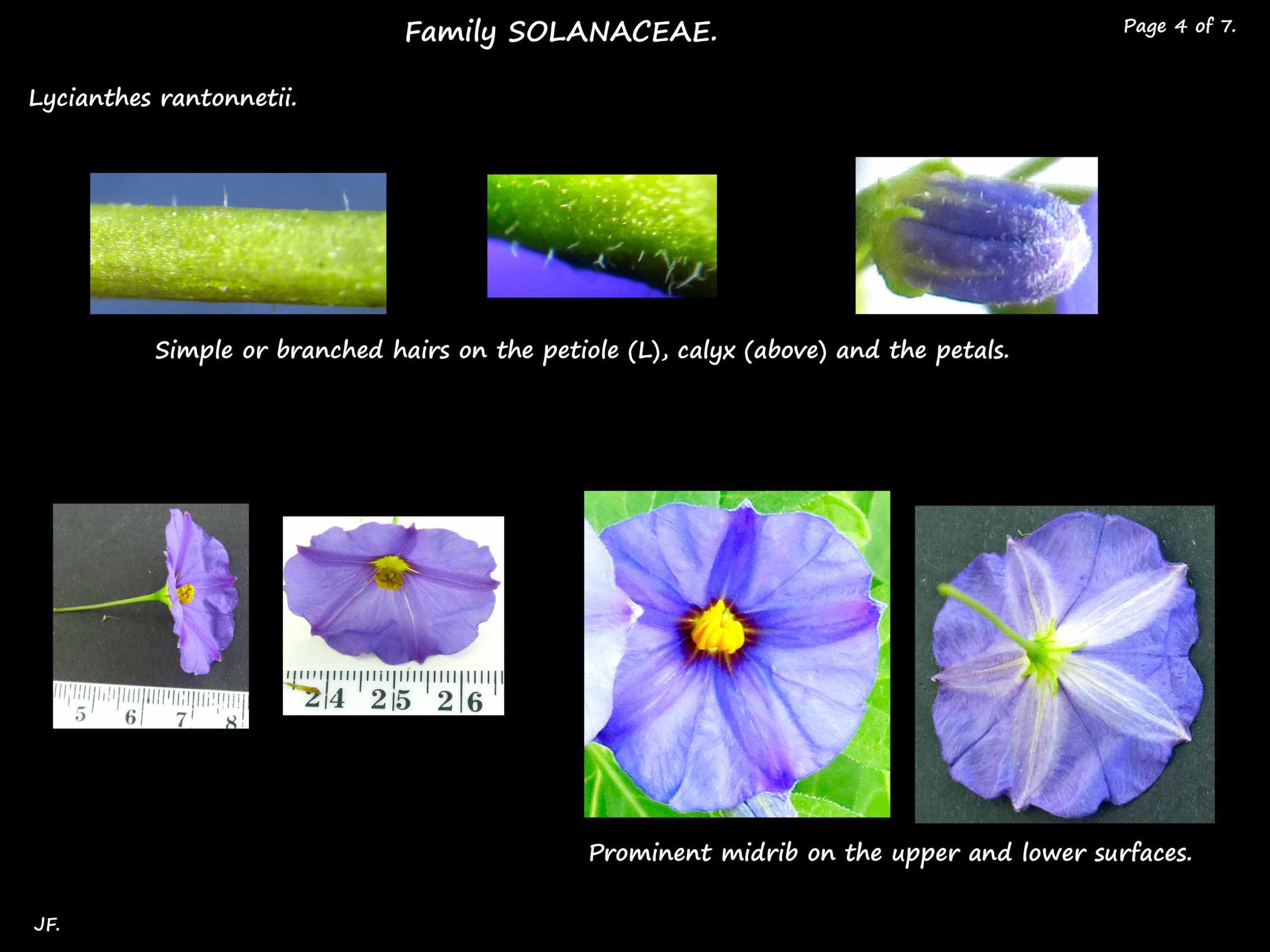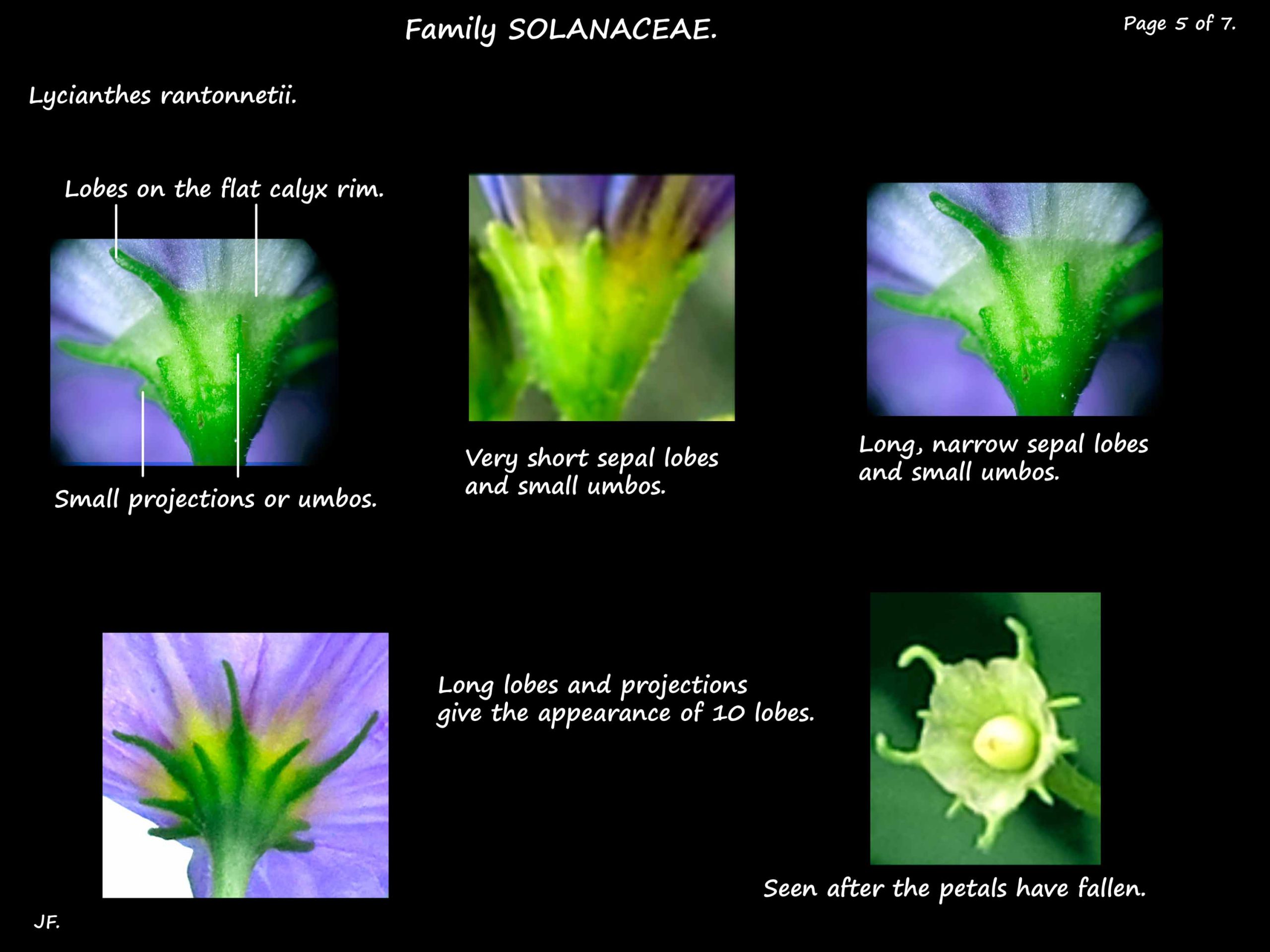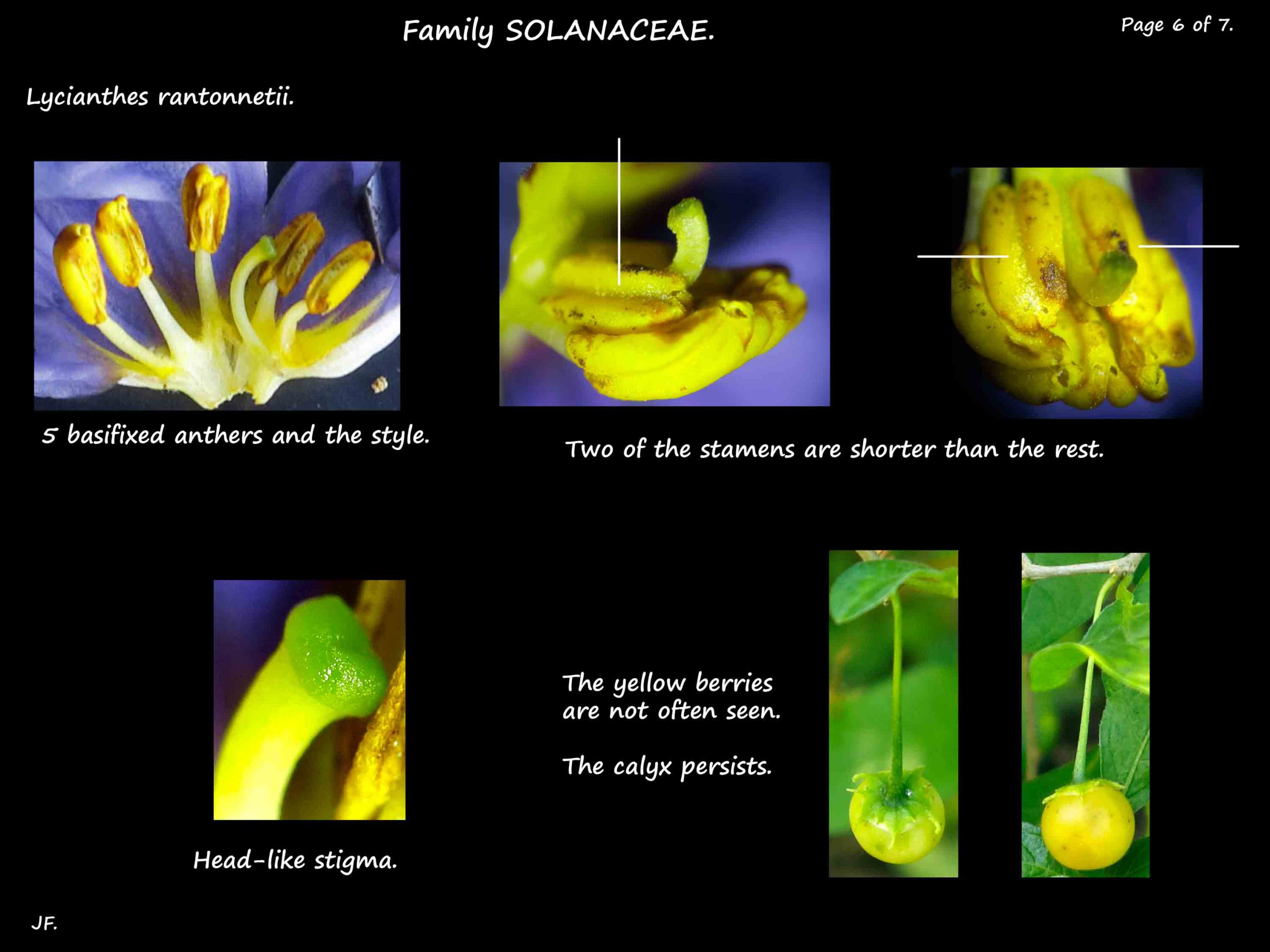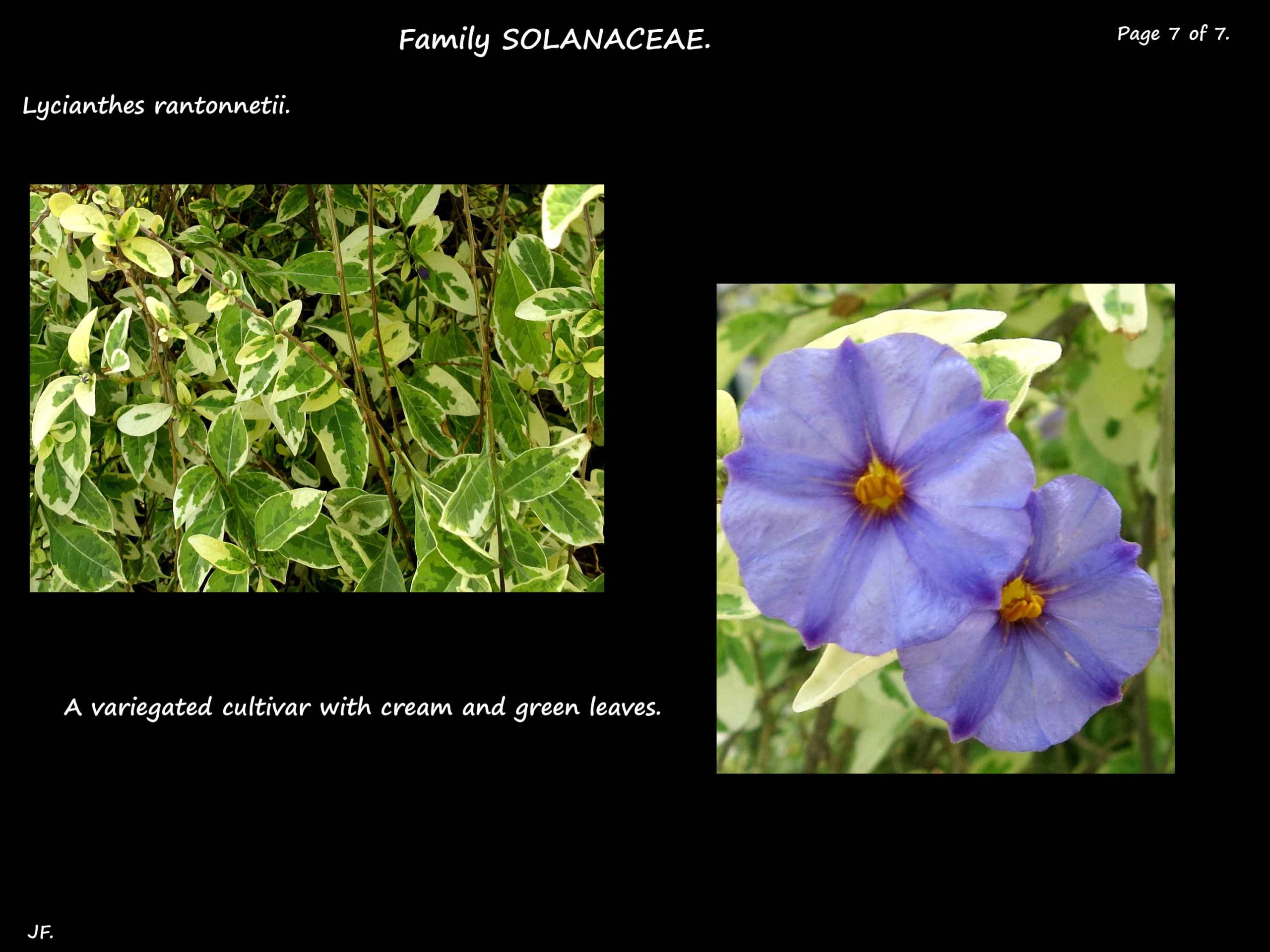Lycianthes rantonnetii.
Previously Solanum rantonnetii it is known as the Blue Potato bush.
It is seen in gardens and is naturalised in parts of Australia.
They are shrubs around 2 to 3 m high and wide with arching branches.
The slightly angled stems have some hairs when young but no prickles.
The simple, alternate leaves are on partly winged petioles around 1 cm long.
The ovate to lanceolate blade is around 10 cm long.
The tip is pointed and the edge may be wavy.
There are simple or branched hairs on the lower surface and the petiole.
Axillary inflorescences consist of up to 5 flowers around 2.5 cm across.
Each is on a stalk around 2 cm long but there is no obvious peduncle.
The 5 petals in the saucer-shaped corolla are almost completely fused.
The corolla is blue to purplish-blue with a wide midrib ending in a small pointed tip.
The midrib is a darker blue on the upper surface and white to pale blue on the lower.
The centre of the corolla is yellow with short rays.
The calyx, around 4 mm long, is cup-shaped with a flat rim.
There may be 5 narrow lobes on the rim up to 2 mm long.
On the cup between these are 1 to 5 small projections or umbos.
If these extend past the rim of the cup it gives the appearance of 10 lobes.
There are 5 (4) stout stamens around 3 mm long inserted onto the corolla.
The upper two are slightly shorter than the others.
There are a few hairs on the base of the filaments.
The yellow basifixed anthers open via apical pores.
The fruit are roughly spherical yellow berries.
There are a number of cultivars with white to deep purple flowers or variegated leaves.
J.F.
